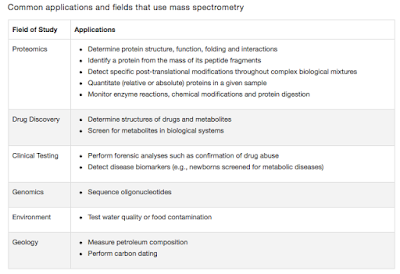Rhinovirus C
Greetings
Let me first throw a question. What would be the most common set of infection that a good majority of the world population would have had at least once in a lifetime? Well, the answer is probably a big list which includes Herpes viruses, Adenovirus, Enteroviruses, Rhinovirus etc. Of these, Rhinovirus are perhaps the most ignored.
Rhinoviruses belong to Enterovirus group (Picornaviridae Family). Structurally they are Non-enveloped, roughly spherical with single-stranded positive sense RNA. The viral genome encodes a single polyprotein which is cleaved by virally encoded proteases to produce 11 proteins. VP1, VP2, VP3, and VP4, make up the viral capsid and remaining nonstructural proteins are involved in viral genome replication and assembly. Rhinovirus is different from other rhinoviruses in that they don't grow at 37 C. Instead, they prefer a temperature of about 35 C which is normally seen in upper respiratory tract.
 |
| Fig 1: Genetic Phylogeny of Human Rhinovirus Virus. Source |
Historically, rhinoviruses were classified into serotypes and genotypes. The viruses were grown in cell cultures and then subsequently typed. Currently, Human rhinovirus (HRV) is currently classified to 3 species HRV-A, HRV-B and HRV-C with a total of 160 identifiable subtypes.
The 3rd group of HRV doesn't grow in cell culture systems and thus was missed in earlier times. With the ability to do the whole genome sequences directly from the sample, HRV-C has been identified. The first detection was in 2006, in respiratory samples collected from patients in Queensland and New York City. An approximate estimate of the genetic phylogeny of HRV is shown in Fig 1. It is expected that this phylogeny will change with an increase in the number of sequences. In fact, there is some data to hint that HRV-Cγ is very diverse.
Interestingly, HRV C is associated with more fulminant respiratory infections and some studies have shown it to be associated with Asthma. For example, Casas et al showed that of nasopharyngeal aspirates tested from 16 infant patients infants hospitalized after an apparently life-threatening event, 6 aspirates had HRV-C. In another study by Bizzintino et al, HRV- C was detected in 59.4% of children with acute asthma and was associated with more severe asthma.
 |
| Fig 2: Structural modelling of RV-C15 binding to CDHR3 receptor. Source |
HeLa Cells are used for culture and study of HRV biology. The special problem of inability of HRV-C to infect and grow in HeLa cell line led to the idea that the receptor is different. This problem was studied by Bochkov et al. The virus grows considerably well in a primary organ or cell cultures derived from sinus tissue. Studying the genetic expression profile in susceptible cells and narrowing the list 12 membrane proteins were identified. Expression of the gene in cells was used to test the receptor and found that the protein Cadherin-related family member 3 (CDHR3) when expressed in HeLa cells lead to replication.
The exact role of CDHR3 is not well understood. What is known is it is a member of the cadherin family of transmembrane proteins and functionally, are involved in cell adhesion, epithelial polarity, cell-cell interaction, and differentiation. Te gene is strongly linked with early childhood asthma with severe exacerbations. Even more interesting is the finding that a mutation in the gene causing a change from cysteine to tyrosine at amino acid 529, increases virus binding and virus replication in HeLa cells that are artificially induced to synthesise CDHR3.
Rhinovirus vaccine hasn't been an issue of great interest earlier since HRV-A and HRV-B causes a very low level of clinical impact. However, there is a renewed interest to make a vaccine and study a detailed biology of HRV-C especially in context with Asthma. Rhinovirus C is resistant to current known antiviral drugs. In a recently published study in PNAS, researchers have analysed the cryo-EM atomic structure of RV-C15a. The structure showed why the virus is different from other HRV. Palmenberg comments, "We found some interesting things. Unlike normal rhinoviruses, this one has spikes on the surface of the particles. We had not anticipated that."
Interesting enough, the structure has been sufficiently enlightening. The structre shows possible virus receptor contact regions, which is important in drug and vaccine design. The study also found that about 30% of the virus particles were empty and didn't contain any genetic material. These structures called as native empty particle (NEP) are also proposed as a possible vaccine candidate. Earl etal has a commentary piece running suggesting that Cryo-EM could serve as a possible tool to find vaccine targets of interest, especially in those cases where classic technologies maynot be applicable.
References
1. Lauber CGorbalenya A. Toward Genetics-Based Virus Taxonomy: Comparative Analysis of Genetics-Based Classification and the Taxonomy of Picornaviruses. Journal of Virology. 2012;86(7):3905-3915.
2. Lau S, Yip C, Woo P, Yuen K. Human rhinovirus C: a newly discovered human rhinovirus species. Emerging Health Threats Journal. 2010;3(0).
3. Bochkov Y, Watters K, Ashraf S, Griggs T, Devries M, Jackson D et al. Cadherin-related family member 3, a childhood asthma susceptibility gene product, mediates rhinovirus C binding and replication. PNAS. 2015;112(17):5485-5490.
4. Liu Y, Hill M, Klose T, Chen Z, Watters K, Bochkov Y et al. Atomic structure of a rhinovirus C, a virus species linked to severe childhood asthma. PNAS. 2016;113(32):8997-9002.
5. Earl L and Subramaniam S. Cryo-EM of viruses and vaccine design. PNAS. 2016;113(32):8903-8905.





Comments
Post a Comment